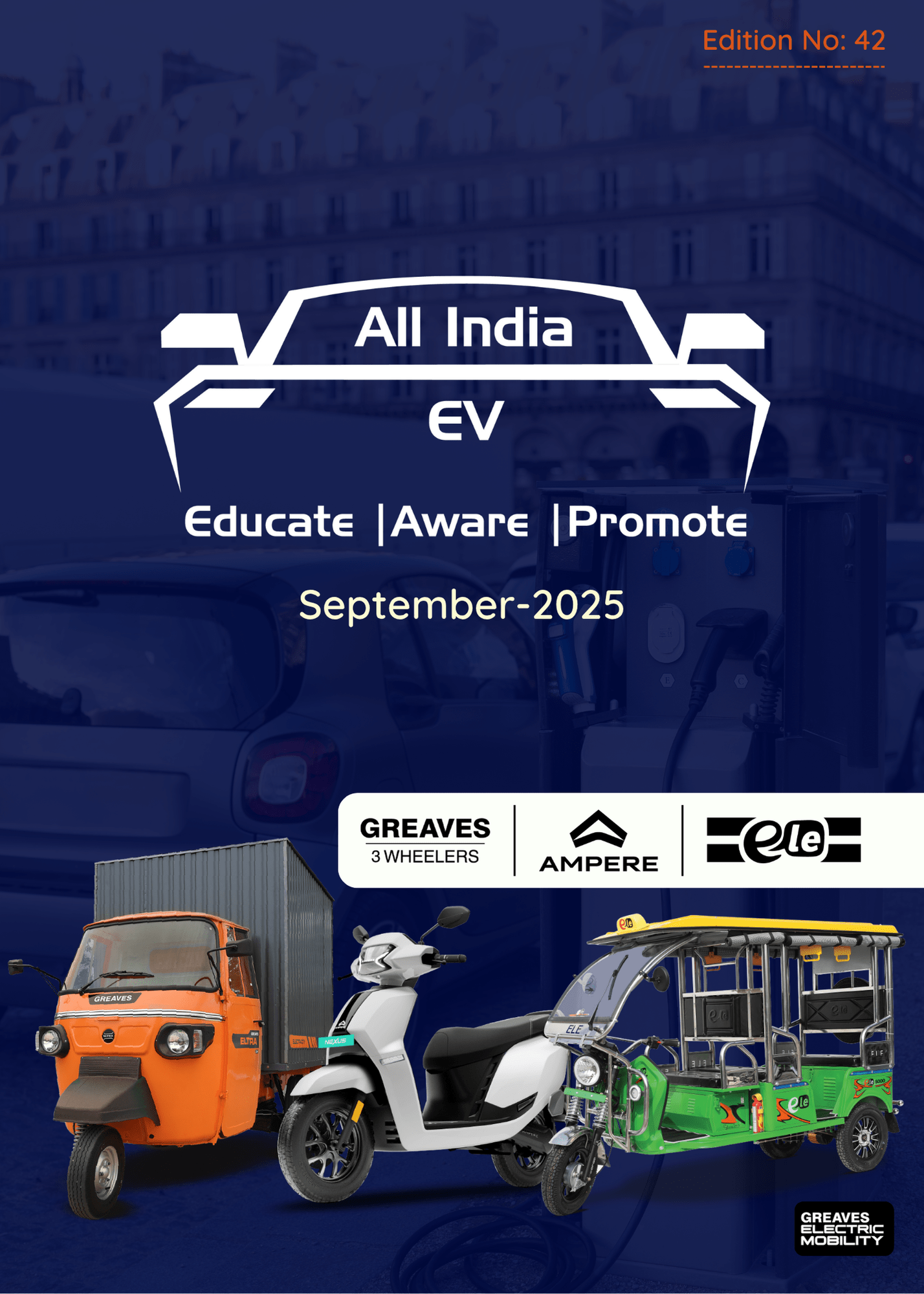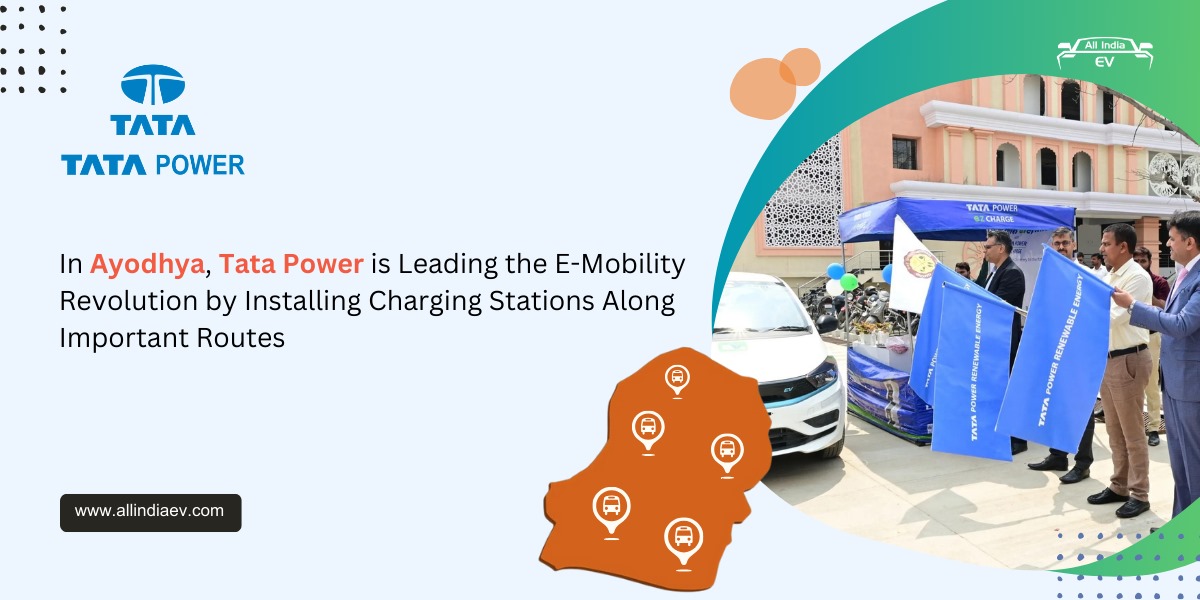
In an exclusive feature, India EV speaks with Chara Technologies and Torus Robotics about how India can secure its electric mobility future amid China’s restrictions on rare earth magnet exports.
When China denied rare earth magnet exports to Sona Comstar, a key Indian Tier-1 EV component supplier, it didn’t just disrupt a shipment. It disrupted India’s sense of control over its EV future.
The motors that power India’s growing electric vehicle fleet — two-wheelers, e-rickshaws, buses, drones — are heavily reliant on rare earth magnets, especially Neodymium and Dysprosium, materials almost entirely mined and processed in China.
It’s a fragile dependency for a country targeting 30% EV penetration by 2030. One that raises a crucial question:
Can India build its EV future without China’s magnets?
⚠️ The Rare Earth Trap
While India holds an estimated 6.9 million tonnes of rare earth reserves, it lacks the processing, alloying, and magnet-making infrastructure needed to turn that ore into usable EV components.
- India imports over 90% of its magnet needs.
- There’s no commercial-scale rare earth magnet plant operational yet.
- Most magnetization equipment — vital for final motor production — is still imported.
And while the government is now backing domestic initiatives like Midwest Group’s ₹1,000 crore magnet plant, the timeline stretches to late 2025 and beyond.
So what now?
🇮🇳 Two Indian Innovators. Two Complementary Approaches.
To understand both the gravity of the crisis and the possibilities ahead, EV reached out to two of India’s most promising motor technology startups:
- Chara Technologies, known for building magnet-free, rare-earth-independent motors
- Torus Robotics, a deep-tech firm that designs high-performance axial-flux motors, currently uses rare earths but is actively adapting to achieve future independence.
Together, their perspectives paint a picture that is both alarming and hopeful.
🧭 Chara Technologies: Solving the Crisis Without Rare Earths
Mr. Bhaktha Keshavachar, Founder & CEO of Chara Technologies, doesn’t mince words:
“This isn’t just an EV problem — it’s a national capability question.”
Chara’s solution? Motors are built entirely without rare earth magnets.
“Our systems are already deployed and match the efficiency of PMSMs in real-world cycles. It’s not just lab innovation — it’s on-road resilience,” Bhaktha adds.
For India’s policy roadmap, he calls for targeted R&D support, testing acceleration, and procurement incentives that reward material independence.
🧠 Torus Robotics: Navigating the Magnet Maze with Smart Design
While Chara bypasses rare earths, Torus Robotics operates at the heart of the current challenge.
They use rare earths — and that makes them an ideal voice to explain how vulnerable India is.
“India’s EV and robotics sectors are highly exposed. We have the reserves, but no large-scale magnet-making capacity. That’s the missing link,” their response notes.
But Torus isn’t waiting around. Their axial-flux motors are modular and future-ready — already being tested in 2Ws, 3Ws, AGVs, and off-highway vehicles. And they’re actively working on:
- Magnet partnerships (including ferrite and hybrid)
- In-house magnetization machines
- Ferrite-based performance optimization
Their goal? Reduce rare earth dependency without sacrificing power or efficiency.
“Our architecture allows us to adapt — even towards magnet-less designs in the future.”
🔍 What Must India Do Now?
Both startups agree — India needs a dual approach:
🟢 Short-Term Fixes
- Import diversification: Look to Vietnam, Mongolia, and Australia.
- Subsidized import buffers: Offset cost premiums on non-Chinese magnets.
- Strategic stockpiling: A rare-earth reserve, like crude oil or gold.
🧱 Long-Term Strategy
- Full-stack magnet ecosystem: From ore to final motor, built in India.
- Domestic machinery innovation: Especially for magnetization and testing.
- R&D investment: Specifically for rare-earth-light or rare-earth-free motor technologies.
🔋 The Road Ahead: Beyond Magnets, Toward Sovereignty
India’s EV success story can’t just be about how many vehicles it sells — it must also be about how many key components it owns.
As China tightens control over critical materials, startups like Chara Technologies and Torus Robotics show us two different roads to independence:
- One skips the magnet altogether.
- The other rewires the motor to adapt.
Both lead to the same destination: A more resilient, self-reliant, and strategically secure India.
Now it’s up to policymakers, OEMs, and industry stakeholders to choose speed over silence.
Responses from Chara Technologies & Torus Robotics to EV’s Queries
Chara Technologies:
- How serious is this supply chain threat for India’s EV and component manufacturing ecosystem?
It is serious. We are building a clean energy future, but the core tech, especially motors, is still heavily dependent on a single country for critical inputs. That’s not a comfortable place to be, especially when you’re trying to scale manufacturing and hit global benchmarks
This isn’t just an EV problem, it is a national capability question. The sooner we solve it, the better positioned we will be for the long haul.
- What are the feasible short- and long-term alternatives to rare earth magnets for EV motors?
For short term, it’s mostly about securing alternate supply chains, hedging bets, and ensuring we don’t get caught off-guard. That could mean finding new trade partners or building some stockpiles.
But the long-term solution is different. We either figure out how to mine and process these materials ourselves, or we invest in technologies that don’t need them at all.
That’s where companies like us come in, building homegrown, magnet-free motor systems that don’t rely on imports in the first place.
- How does Chara’s magnet-free motor technology offer a resilient path forward for Indian OEMs?
We are proving that it’s possible to build high-performance EV motors without Rare-Earths, right here in India. Our systems are already being deployed, and in many cases, we are matching or beating the efficiency of PMSMs, especially under real-world duty cycles.
This isn’t a lab experiment. It’s production-ready tech that reduces cost, eliminates material risk, and strengthens the domestic supply chain. That’s resilience. Not just on paper, but on the road.
- What kind of support or collaboration do you believe is needed at the policy or industry level?
From a policy standpoint, we need sharper focus. It’s not just about EV adoption. It i’s about building a secure, self-reliant EV ecosystem. That means targeted R&D support, faster testing and certification frameworks, and procurement incentives that recognise material independence as a strategic advantage.
On the industry side, magnet-free motors can be adopted as drop-in replacements in many cases. That’s one of the advantages of the tech that we have built. But going forward, there is also an opportunity to co-develop platforms around these new motor architectures. That could unlock even greater gains in performance, cost, and system-level efficiency.
Torus Robotics:
- How Vulnerable Is India’s EV & Robotics Ecosystem Today?
India’s dependence on imported magnets makes its EV and robotics sectors highly exposed. While the country has ample rare earth reserves (~6.9 million tonnes), it still lacks end-to-end value chain infrastructure—particularly in the alloying and magnet-making stages.
There’s currently no large-scale domestic producer of rare earth magnets at commercial scale — leaving most OEMs and motor manufacturers reliant on Chinese supply.
Immediate Measures India Can Take:
- Fast-track domestic magnet production: The recent announcement by Midwest Group to invest ₹1,000 crore in setting up India’s first commercial rare earth magnet plant is a big step forward. Backed by the government’s Technology Development Board, it aims to be operational by December 2025 with 500 TPA capacity, scaling to 5,000 TPA in later phases.
- Critical mineral recycling: A proposed ₹1,500 crore incentive scheme for recovering rare earths from end-of-life electronics and EVs is under review. This could offer a supplementary source of Neodymium and Praseodymium.
- Sourcing diversification: India can mitigate short-term risk by securing rare earths and pre-fabricated magnets from countries like Vietnam, Myanmar, Mongolia, and Australia.
- Is India Doing Enough to Support Local Innovation in EV Core Components?
What’s Working:
- Policy backing through PLI schemes, critical mineral auctions, and R&D grants is picking up pace.
- Projects like Midwest’s magnet facility and support for IREL (India’s public-sector rare-earth player) indicate strategic intent.
- The push to localize entire EV supply chains, including motors, batteries, and semiconductors, is aligned with national goals.
What Still Needs Attention:
- India lacks full-stack magnet manufacturing — from rare earth oxide to magnetized end-product.
- Startups and deep-tech companies working on rare-earth-independent innovations (like Torus Robotics) need more direct R&D grants, access to testing labs, and incentives for commercialization.
- Magnetization machinery (used to align magnet poles) is still mostly imported. Developing local capability here is key to scaling magnet production.
- What Are India’s Realistic Alternatives to Rare Earths in the Short and Mid-Term?
Short-Term (1–3 Years)
India must act swiftly to reduce its overdependence on China. Some pragmatic steps include:
- Diversified Import Strategy with Subsidy Support:
- As an immediate buffer, India should import rare earth materials from alternative countries such as Australia, Vietnam, Myanmar, and Mongolia. However, these alternatives may currently come at a higher cost compared to Chinese suppliers.
- To address this, the government can offer temporary import subsidies that offset this price difference, allowing Indian manufacturers to maintain cost competitiveness.
- Strategic Stockpiling – A “Rare Earth Reserve”:
- Similar to how countries maintain gold and oil reserves, India can start strategic stockpiling of critical rare earths. This reserve can act as an emergency buffer in case of further geopolitical restrictions or market shocks.
- Fast-track Imports of Alloys & Magnet Blocks:
- Until local production scales, India can focus on importing pre-processed magnet blocks or alloys, reducing the dependency on raw oxides and the intermediate supply chain.
Mid-to-Long-Term (3–7 Years)
Over the long term, India’s approach must shift from reactive to proactive. The following strategic measures can help build an end-to-end, indigenous rare earth and EV component ecosystem:
- Full Stack R&D Investment – From Ore to Motor:
- A holistic R&D policy should incentivize:
- Raw material extraction from Indian reserves
- Processing technologies (refining, alloying)
- Magnet and motor manufacturing
- Final product applications in EVs and robotics
Government schemes should be tailored to support startups, academic institutions, and industries working on rare-earth-free motor topologies, ferrite-based designs, and efficient magnetization technologies.
- Make in India for Magnets & Magnetizers:
- India must also prioritize domestic production of magnetization machines, which are currently imported and critical to final motor assembly. Supporting Indian machinery OEMs in this space will further strengthen independence.
- How does Torus Robotics’ axial-flux motor technology align with India’s push for rare earth-independent, high-performance electric mobility solutions?
At Torus Robotics, we’ve always believed in building future-proof technology — and our axial-flux motor platform reflects that philosophy.
How Our Motor Technology Aligns:
- Our axial-flux motors are designed with modular stator/rotor architecture, allowing us to adapt to ferrite magnets, or in future, even magnet-less designs.
- These motors offer high torque density, better cooling, and superior power-to-weight ratios — often at 30–50% smaller volume compared to traditional radial motors.
- We’re also investing in magnetization machines to bring core magnet-processing steps in-house, ensuring flexibility and localization.
What Sets Torus Apart:
- Our motor architecture is already being validated for use in AGVs, 2Ws, 3Ws, and compact off-highway vehicles.
- We’re actively partnering with Indian suppliers and exploring magnet partnerships — including collaborations with firms exploring ferrite and hybrid magnet development.
- Our R&D team is focused on performance optimization with ferrite configurations, reducing dependence on rare earths without compromising output.
Looking Ahead: India’s Moment to Lead in Rare-Earth-Independent EV Innovation
China’s export control may seem like a threat — but for India, it’s a catalyst. With growing investments, rising demand, and an ecosystem of innovators, we have a chance to redefine the EV motor market from the ground up.
Torus Robotics is proud to contribute to this mission, designing motors that are not just high-performance and scalable — but also strategically aligned with India’s national interests.










